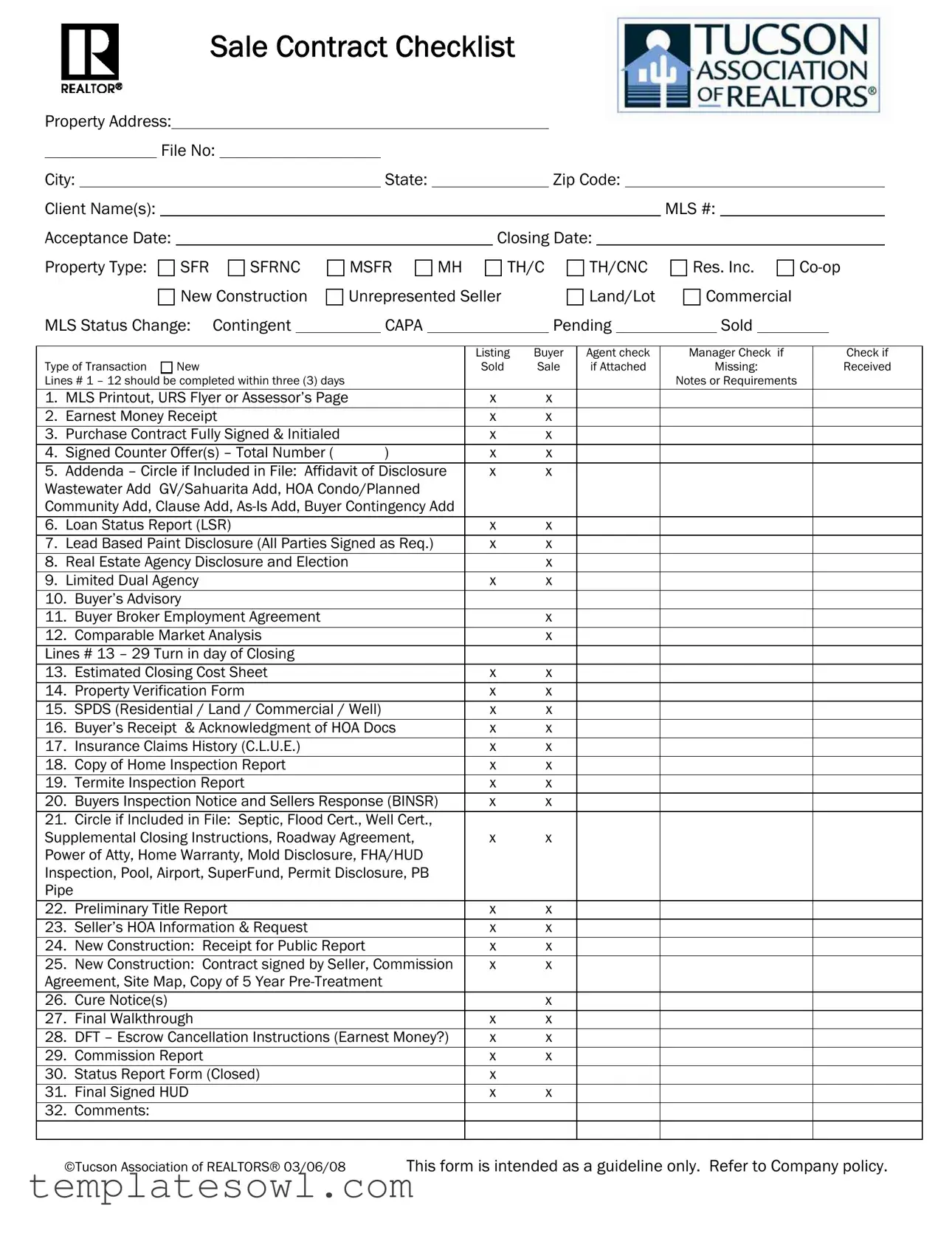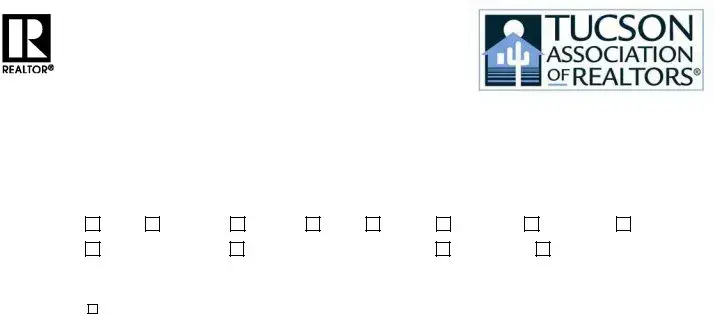Filling out the Real Estate Checklist form can be straightforward, but many individuals encounter common mistakes that can lead to complications. The first mistake often made is failing to complete all mandatory fields. Each section, especially the property address and client name, must be filled in. Incomplete information can delay the processing of your transaction.
Another frequent error is not submitting the required documents promptly. Lines #1 through #12 of the form require documentation that must be provided within three days. Delays in submitting these items can jeopardize the timeline for the sale.
Omitting important documents is also a significant mistake. Many people forget to include the PURCHASE CONTRACT, which needs to be fully signed and initialed by all parties. Without this, your agreement lacks validity, which can lead to disputes or cancellations later on.
Some individuals mistakenly assume that all addenda are optional. However, it's crucial to mark whether addenda such as the Lead Based Paint Disclosure are included. Missing these disclosures can expose you to legal liabilities.
Confusion over transaction type is another potential pitfall. It is essential to accurately check the type of transaction, whether it is a new sale or a resale. Incorrectly identifying the transaction can create complications in the escrow process.
Many wait too long to verify financing details. A Loan Status Report is a necessary component of the checklist, and not providing it promptly can result in delays in closing.
Another common oversight is neglecting to circle if certain documents are included in the file. It is imperative to ensure that the Buyer's Advisory and other necessary disclosures are marked correctly. This lack of attention to detail can complicate the transaction down the line.
One might also overlook the importance of including the Preliminary Title Report with deadlines aligned with the closing schedule. The failure to do this can lead to unforeseen issues regarding property ownership and claims.
During the final checks, not conducting a final walkthrough can lead to surprises after the purchase. It is essential to ensure that everything is in order before finalizing the transaction.
Lastly, failing to gather and turn in the Final Signed HUD can result in significant delays at closing. This document is critical for confirming all financial details and ensuring that the transaction proceeds smoothly.

